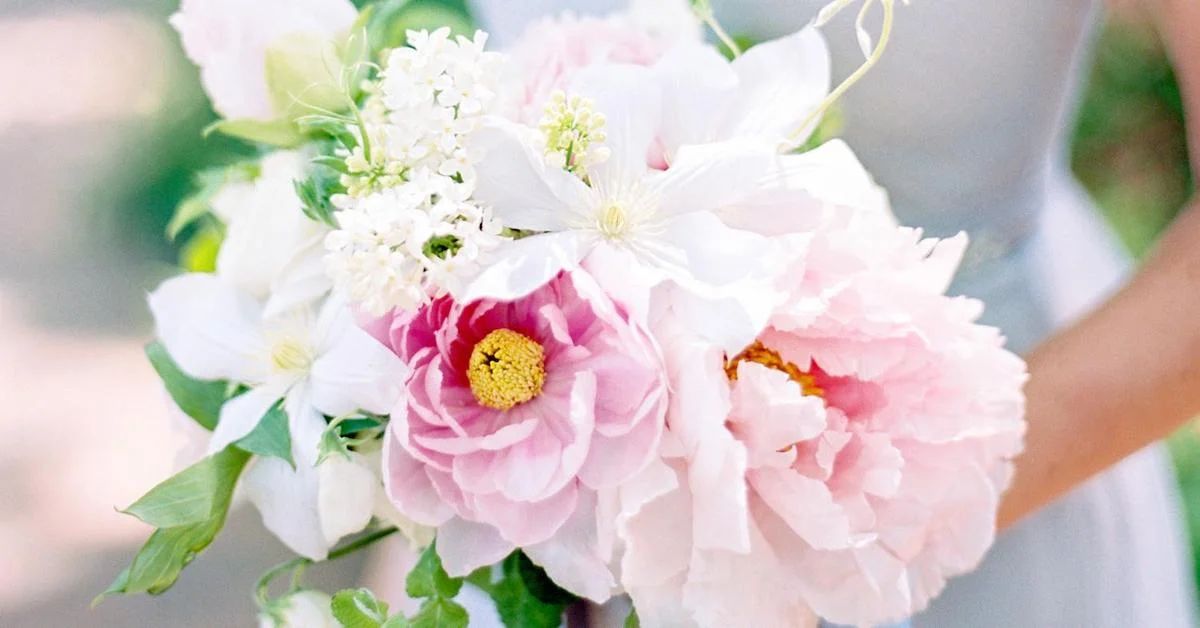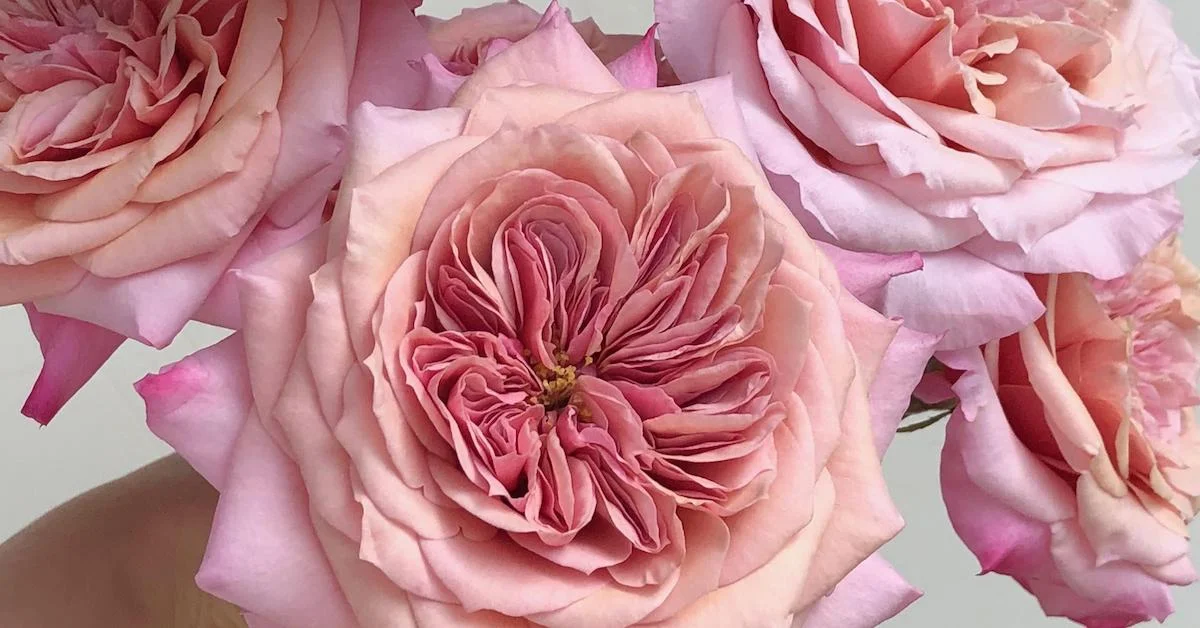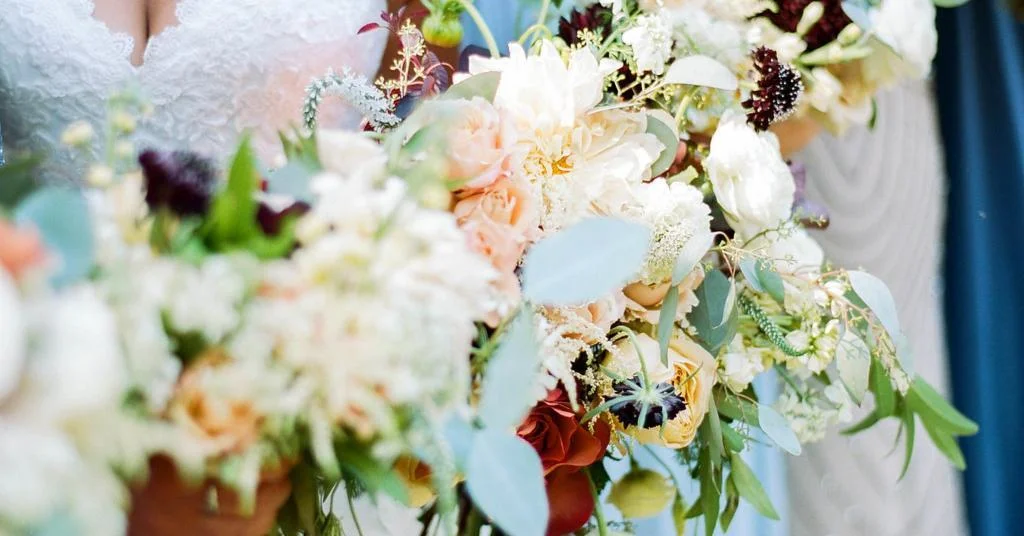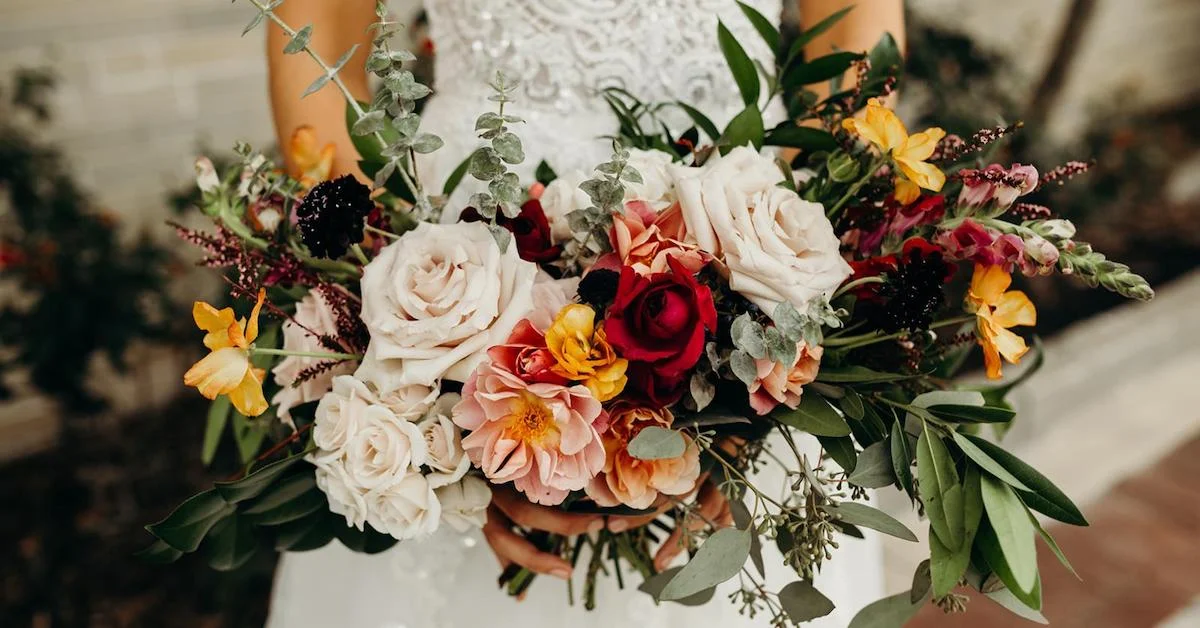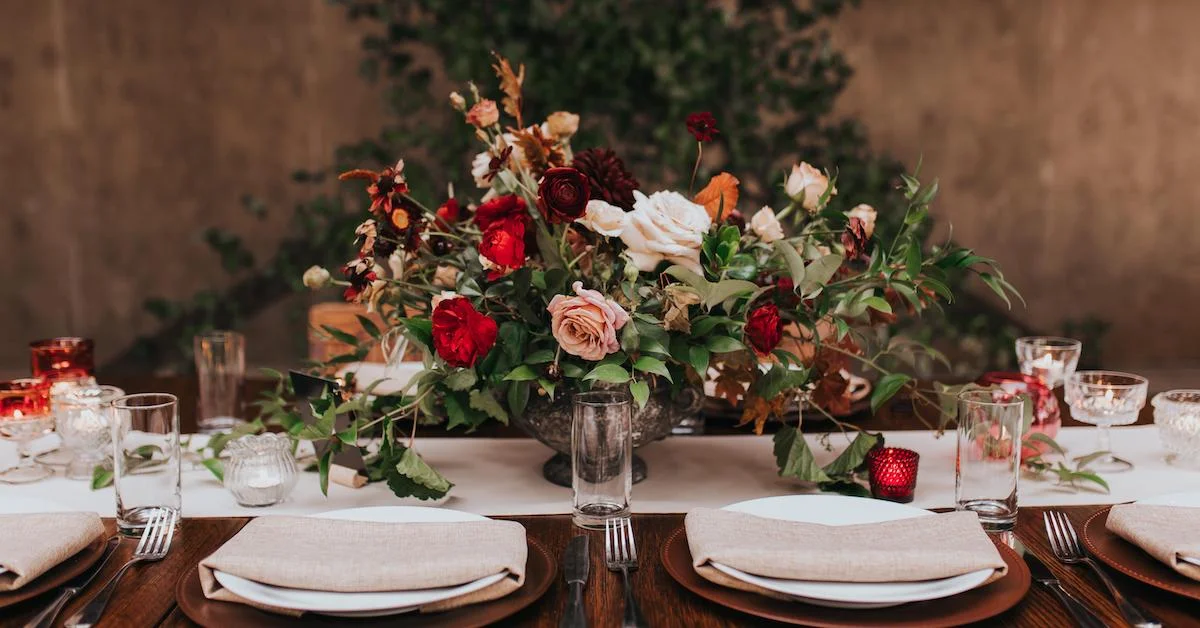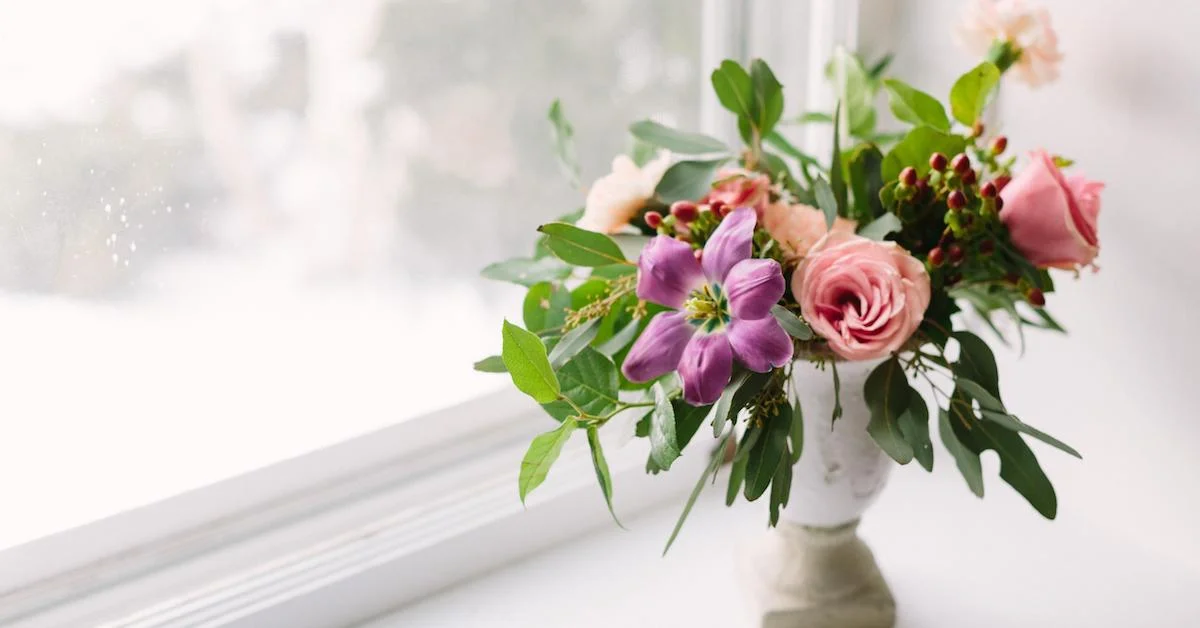Growing delphinium as a cut flower crop can have its challenges, but if you follow an orderly process, it can be a very rewarding flower to grow. Delphinium has several advantages such as its striking, dramatic quality and large stature which can be useful in larger arrangements. It also blooms during that early June window when your spring flowers may be finished, but your summer annuals aren’t flowering yet, helping you fill in that gap. It also provides that hard-to-find true blue color in both light and dark shades.
How to Arrange with Unique and Foraged Flowers
Ready to use extraordinary florals and to boldly go where no florist has gone before? Foraging for your own flowers just takes an extra little bit of creativity and a sense of adventure. Here’s some insight on how to use unique and foraged local flowers in your designs.
Team Flower's Next Chapter
Small businesses grow one step at a time, and most often, the really important things unfold slowly right under our own noses. You probably remember those early moments of your floral business, too, where you were crunching the numbers and fitting in floral work where you could on top of others jobs…
Importance of Client Interaction in Floral Work with Juliana of La Feterie
In this episode, Juliana is walking us through her unique bouquet delivery as well as her philosophy behind it. We are chatting about the importance of client interaction in floral design, client intake processes, what to look for when booking a client, and how involved clients could be in the floral planning process. We are sharing a few stories of our bouquet deliveries and how to interact with clients who want to be involved in every detail.
The Benefits of Flower Remedies with Amy Cohen
Amy Cohen reached out to me several months ago and introduced me to an area of flowers I was not familiar with: flower remedies. It’s also called plant medicine or botanical healing. At the time, I was familiar with essential oils and could speak to the life-giving effect incorporating plants into my life, so this was intriguing. Flower remedies are different than oils though, so I thought it could be fun to invite Amy to teach us a little more about this topic.
How to Speak with Floral Design Clients
Whether someone has been in floral design for a year or more than 20 years, the stories shared when designers get together range from heartwarming to hair-raising. We’ve all experienced difficult situations, and it’s my hope that the tips below will help avoid, clear up, or settle any tough stuff with our clients.
Fast Flower Video: Happy Valentine's Day
Watch a fun & bright time-lapse bouquet celebrating Valentine's Day!
Utilizing Texture in Floral Design with The Potted Pansy
In this podcast episode, we are chatting with Mandy from The Potted Pansy about texture and keeping things raw in design. Mandy is sharing where her inspiration began and how her travels have shown her the beauty in the imperfections of nature. We are chatting about Mandy’s favorite ingredients and about her process in choosing which flowers/elements are used for each event.
Connecting with Wedding Vendors as a New Florist
One of the biggest things to consider is marketing your business and how to get your name out there! When you’re a new floral pro, it can be challenging to jump into marketing via social media and publishing, but something simple you can do to introduce yourself to the wedding industry is to network with other vendors in your community. Vendors can include event venues, photographers, planners, caterers, DJs, and even other florists. Again, this may seem like a daunting task, but hopefully these few tips will help make this step a bit easier to accomplish.
How to Design Jewelry Using Fresh Flowers
We’ve all seen the trend of flower crowns, flower jewelry, and flower accessories bloom into the market. And for good reason, too. How cool is it to accessorize your look with fresh floral creations? Floral accessories are great for bridesmaids to accessorize or perhaps for that untraditional bride looking for a little wow-factor. Mothers love a bracelet cuff adorned with floral rather than a traditional wrist corsage! But how do we design jewelry using fresh flowers?
Video: How to Make a Chuppah
Our friend Fuschia of Fuschia Moss Floral Design is here to help show us how to make a chuppah. See how we used a bale of Southern smilax and late summer forsythia foliage to create a base and a very small amount of Oasis and chicken wire to provide support and nourishment for the flowers.
Adding Floral Design to an Event Planning Business
Team Flower member Abby Rice shares her story on how they added florals to their event planning business, while sharing tips on how you can do the same.
Leaving Your Current Career for Flowers? Awesome Tips to Help
Leaving a well-established and promising career to process hundreds of roses and design wedding flowers may not “make sense” to some, but I’m a fan of a life that doesn’t color inside the lines. You are, too, I imagine. Here are some tips from Team Flower member Kalin Sheick.
Video: How to Make a Boutonniere
Watch as Kelly puts together a boutonniere and explains the various methods of wiring needed. She also shares tips about using ranunculus, color combinations and more. Learn how to become a florist and take floral design classes online with Team Flower. Here you can even learn tips on flower gardening for beginners. We'll show you how to do flower arrangements in flower arranging videos.
Transcript:
-So I have-- and I keep a little reference here whenever I buy new wire-- but this is a 20 gauge. Helps me remember what it is that I want so I can refer back to it. And I just cut off some small sections here. I'm going to fold that in half like a bobby pin.
I'm going to take my ranunculus, and I'm going to pull off anything that is undesirable-- be a petal that got crushed or is facing the wrong way. And I'm just going to snip that off. And some people will just use the stem of their ranunculus for the boutonniere. They wouldn't wire it, and that's another option, another thing that you can do. I prefer the wire because I can have more control over how if faces.
Now this is the stem tape that I mentioned earlier. Whenever I'm choosing-- it comes in several different colors-- but whenever I'm choosing which to use, I consider the flower that I'm using and I try to match as closely as I can with the stem color of the flower. This makes it look most natural. So get as close as you can up to the neck of the flower.
And I am just carrying that tape, stretching it out as I and twisting and finishing that off. Now see, I'm taking that and I'm just going to tilt the face of the flower forward. So now I have a wilder flower and a flower that is cooperating with what I want to do with it. And I have some olive here I'm going to lay in as a backdrop for it. Sometimes I put two pieces of back and maybe one down in here, which I think too that the lapel goes off to the right-hand side. So having a little flourish on the right side it's always nice.
And I'm going to add some berries for texture. And feel free-- like this berry that's a really dark red. It is pulling out some of the color in that ranunculus, but it's just not exactly where I want it to be. So I'm just going to clip that off. And then I trim a few of these piece off here that are lower. And that gives me some berries that can go high.
Then there's a few ways you can finish this off. I'm just going to show you how to use stem tape to finish it off today. But you can use a thin tape and wrap it the same way that we wrapped our bouquet if you like. Or I just tie simple knots to cover my tape. so for a fancier wedding that might be best. But when you wrap with stem tape I just clip off these thicker branches on a little bit of an angle here.
And some people take that little wire that we had and they'll make a little curler or flourish with it. I don't do that very often. But yeah, I pretty much always dress them up with some ribbon.
So practice a few ways to experiment check out a few different ways that you could do that. The oasis tape- you just wrap it around, wrap it back around like we did with the bouquet and these lower stems here are exposed and let's put that there. So now you have a cute little boutonniere that you can photograph. And you make a little tray of wine or you could make a tray of three or five is what I like to do. Now we're going to turn that boutonniere into a flower crown.
Diversifying Color Palettes With Good Seed Floral
In this episode of the Team Flower Podcast, Josie and Taylor of Good Seed Floral join us. The pair is chatting about their roles in their business and how they make their “long distance business relationship” work.
Helpful Advice for Working Together With Your Spouse
Team Flower Member Kathleen and Sloan own a high-volume retail floral business as well as manage a separate wedding and events brand. They’ve been thinking a lot recently about what has made this partnership and this business so successful. It’s impossible to pinpoint just one thing, but Kathleen offers a few pearls of wisdom for anyone on this journey—or for those who are contemplating the idea.
How to Create Elevated Floral Arrangements
To create an elevated centerpiece, there are a few first steps you need to take to ensure your foundation is stable and reliable. Once this is set up, you can navigate through the mechanics to create sustainability and design principles to make your design come to life.
Video: Easy Ways to Organize Your Studio to Process Flowers Efficiently
In this snippet from the Team Flower Foundations class, Kelly walks you through her studio setup and how she organizes everything for maximum efficiency and minimum workload. Many people don’t realize that working in the floral industry can require a lot of manual labor. From picking up and moving buckets of water to processing flowers to delivery, these are all tasks that can take a toll on our bodies!
The 2018 American Grown Field to Vase Dinner With Kelly
Every year, American Grown Flowers hosts a multitude of Field to Vase dinners across the United States. These events are held at beautiful farms that place seasonal, local, and sustainable American-grown flowers at the center of each table and serve locally grown food, beer and wine prepared by a farm-to-table chef. The focus of the dinner tour is on the flowers, the farms, and the guests, which makes for quite a magical experience!
The Best Tips for Rebranding Your Flower Business
Rebranding for florists can be hard, especially since our work is so visual! Here are 7 tips to help you work through rebranding your floral business.




